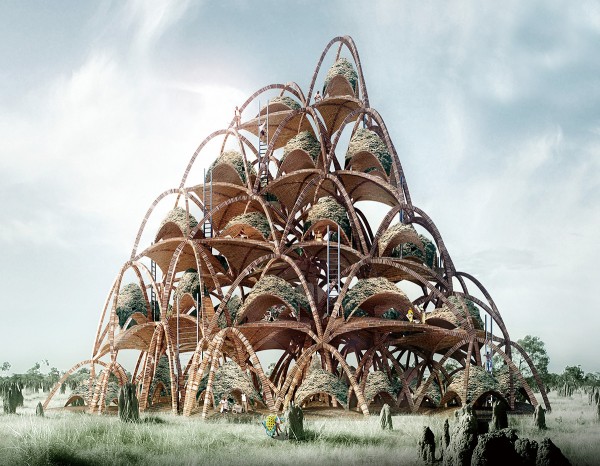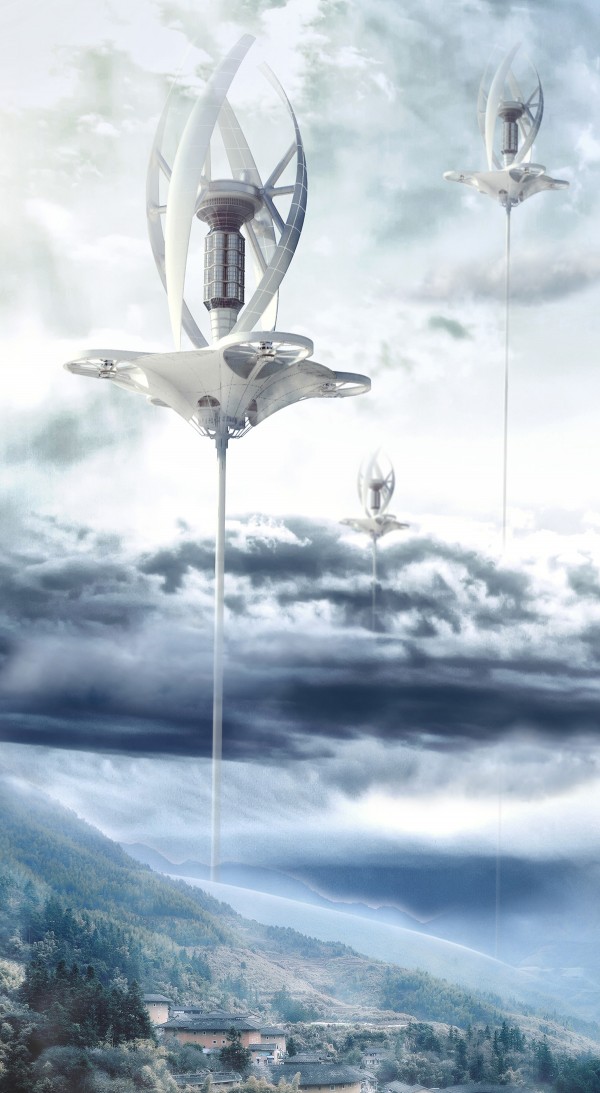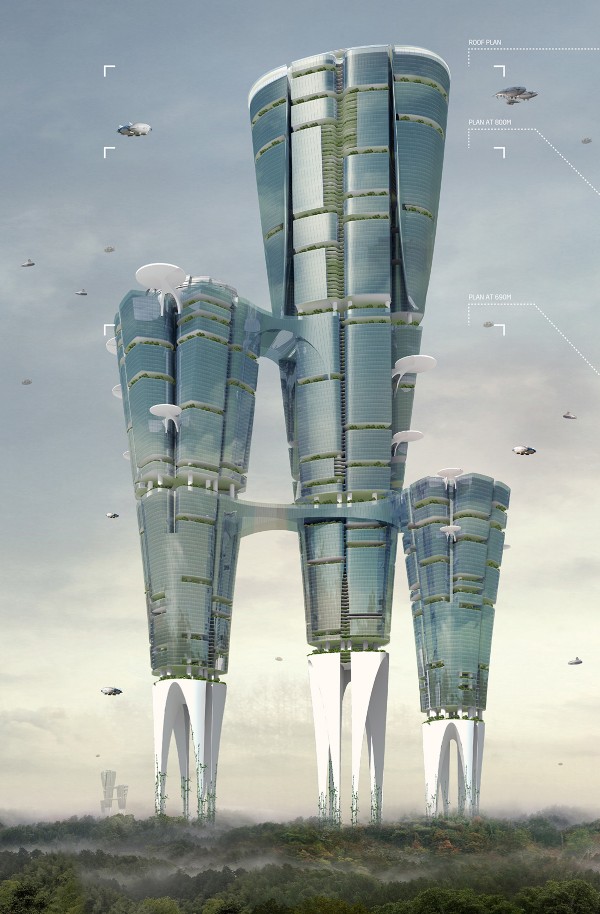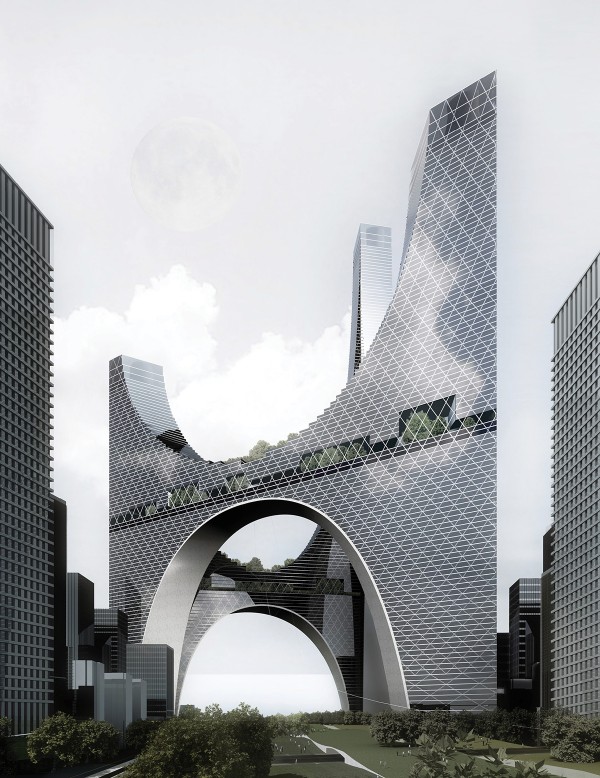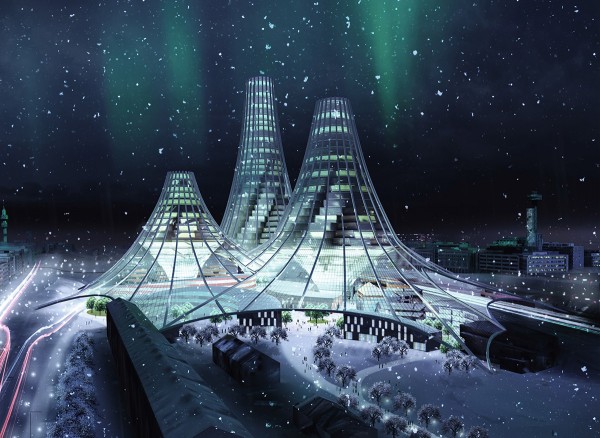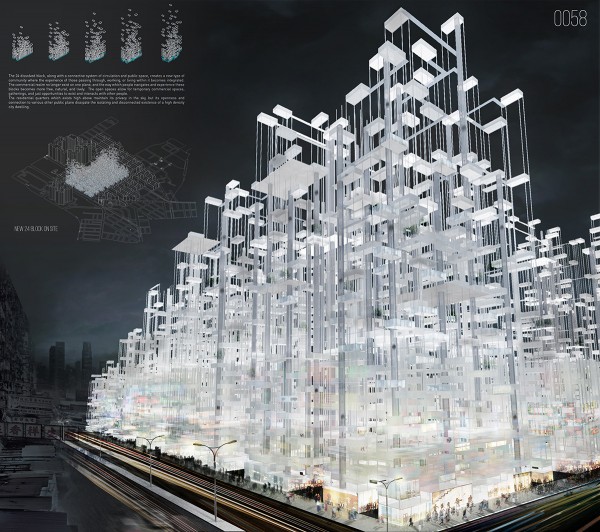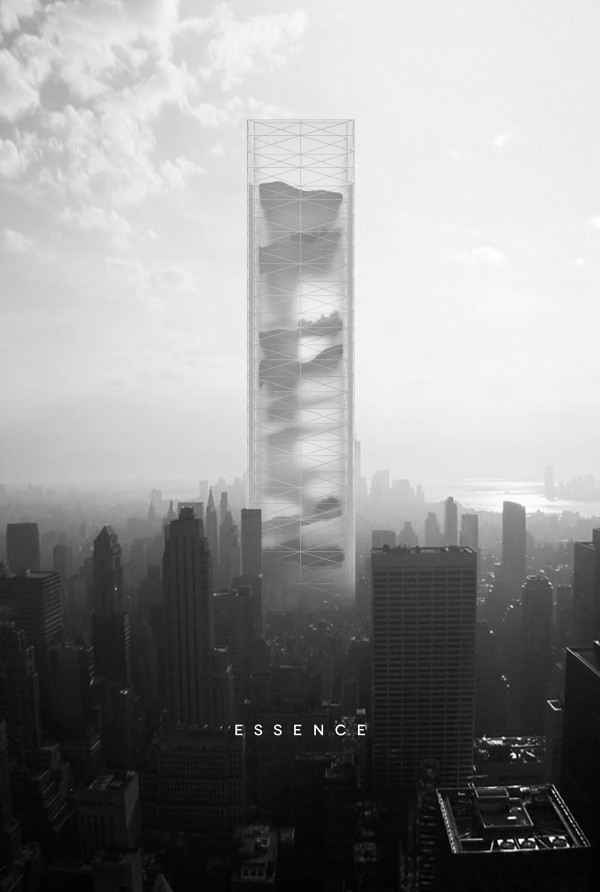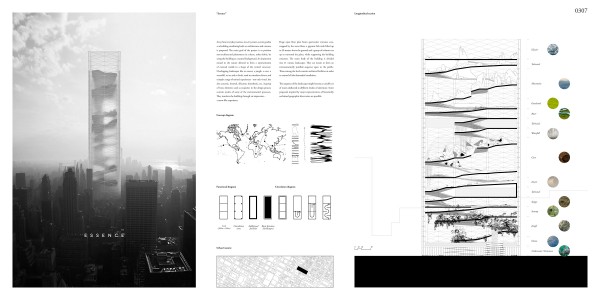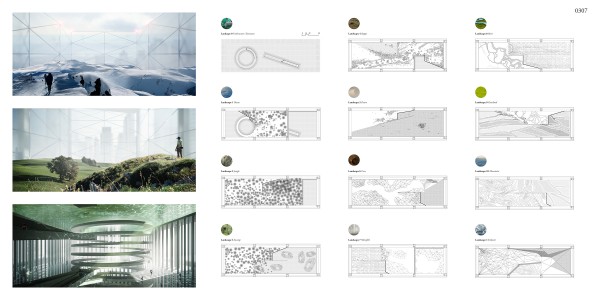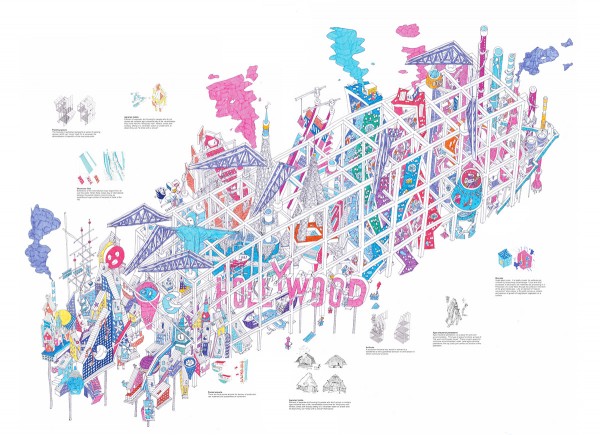Editor’s Choice
2015 Skyscraper Competition
Chong Wang, Mingwei Sun, Zhen Wang
China, United Kingdom
It might be overly idealistic to combine the eagerness for tall buildings with an impoverished region where is waiting to conquer the risk of famine and disease instead of an anticipation of the metropolitan image. However, tall buildings implies the efficient concentration of technologies, materials, productivities and spatial organizations, which, in our design, can be celebrated as the very zeitgeist whereby the poor domains abandoned by the classic urban fantasy can grasp the opportunity to creatively erase the incidence of innutrition in a vernacular, sustainable and optimistic way.
Nowadays, there are still some countries in Africa suffering the said problem. Take the needs of protein as an instance: according to the statistics of nutrients, people from the Republic of Central Africa (the sample case) hardly obtain sufficient protein from diet (46 g/person/day) which detrimentally falls behind some leading countries (e.g. Iceland (137 g/person/day), but ironically overwhelms at least 7 countries from the same continent. Because of the scarcity of capital and resources, these countries barely afford a decent agricultural infrastructure, not to mention the influence of the increasingly fragile ecosystem.
When the generic agriculture encounters flaws and limitations, the alternative is required, which is back to the tradition. In Africa, eating termites used to be a way of life when other sources of protein are scarce since termites generally consist of up to 38 percent protein and also rich in iron, calcium, essential fatty acids and amino acids. Our study finds that the annual reproduction of one queen equals to 30kg of beef, which could be impressively valuable in an African context. Although taking advantage of the rich nutritional quality of these insects sounds feasible, there are some restrictions: the tradition way to harvest termite can only happen in the beginning of the rainy season when winged termites appear; furthermore, breeding termites for daily consumption requires vast land area and abundant resource of plant fibre (for the symbiotic protozoa). Therefore, how to effectively control and breed termites with specific regards to the production and safety is the key of this proposal. In accordance with our concept, the proposed solution goes to an extension on the vertical direction as interpreted at beginning.
Our proposal explores the applicability of a tall building design in edible termite farming of Africa which supported by low-tech masonry work in order to encourage the involvement of local people and reduce the capital cost. With the help of cross arch, duplicable units, each of them contains a mound for a termite nest, can be stacked up to increase the plot ratio. As a result, multiple nests can be assembled within a relatively dense area by using the multiple porous structures whereby air-changing and shading protect not only termites but human workers. In this vertical protein farm, termites’ daily consumption of wood fibre is supported by human gatherer and mechanical proceeding work is involved to smash and reform plant fibre in order to ensure a rapid growth of termite population. Simultaneously, people can use strong light, smoke and spray with pheromone to harvest termites (workers and soldiers) which would become the ingredient of daily meals providing with abundant protein after dehydration and smash.
The life span of the queen can exceed 45 years (sometimes can be 100 years), once the queen has dead, the existing nest can be replaced by new mound waiting for new generations. The towering structure that holds those termite farms thereby can be maintained on the African savannah, casting its silhouette to continuously protect our offspring. Read the rest of this entry »

